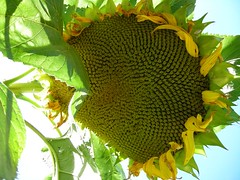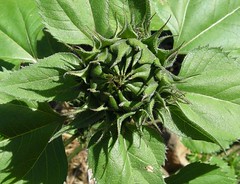永久培养关键破危机
مفتاح المعمرة لكسر الأزمة
Worst inefficient systems still used today,
means the focus of our main attention.
They are the biggest windows,
for fighting against crisis.
Once you have the question,
you add, and add, creative ways to look at it.
How many cars do need USA?
Europe?
Spain?
Morokko?
The antem of PIGS is their overdevelopment,
a road produced basicaly,
by a cultural cloning,
of our brother tio sam.
http://economia.elpais.com/economia/2013/01/07/agencias/1357593307_190376.html
Otras de las medidas que recomienda el borrador, publicado hoy en su página web por el diario The New York Times, es readaptar todo el litoral con la construcción de dunas, humedales y arrecifes de ostras, algo muy frecuente en Nueva York hasta el siglo XIX.
مفتاح المعمرة لكسر الأزمة
Worst inefficient systems still used today,
means the focus of our main attention.
They are the biggest windows,
for fighting against crisis.
Once you have the question,
you add, and add, creative ways to look at it.
How many cars do need USA?
Europe?
Spain?
Morokko?
The antem of PIGS is their overdevelopment,
a road produced basicaly,
by a cultural cloning,
of our brother tio sam.
Is it possible to create more abundance in our lives? Develop an intimate relationship with the natural world? And, at the same time, address our ecological crisis? We believe that permaculture offers a key.
Simply put, permaculture is a design science that is rooted in the observation of nature. It’s a positive, solution-based way of thinking, using a practical set of ecological design principles and methods. Permaculture principles provide a way of thinking that enables people to provide for food, energy, shelter, and other material and non-material needs.
You can apply permaculture to any setting or climate – your garden, your farm or ranch, urban and suburban community structures, watershed systems, and your own inner ecology. Permaculture is focused on taking challenges and transforming them into solutions.
Where Did It Come From?
The idea of designing our lives based on natural systems is not new – our ancestors naturally embodied these concepts for centuries. Indigenous cultures still do, today.
More recently, Bill Mollison and David Holmgren, from Australia, developed the concept of permaculture in the 1970s and first taught permaculture as an applied design system in 1981. There was no term at the time for “sustainable culture,” so they coined the term "permaculture" to articulate the notion of "permanent agriculture." It evolved into the notion of "permanent culture," since culture and agriculture reflect each other.
 How Does It Work?
How Does It Work?
Permaculture asks: how do we – as a human species – sustain ourselves and provide for our needs and the needs of the environment for an indefinite period of time? Permaculturists are looking for the answers by using the principles and methods to create productive ecosystems that have the stability, diversity, and resilience of natural ecosystems.
The permaculture designer looks for ways to integrate water catchment, human shelter and energy systems with tree crops, edible and useful perennials, self-seeding annuals, domestic and wild animals and aquaculture.
For example, the excess or waste products from plants, animals and human activities are used as nutrients to benefit other elements in the system. Plantings are arranged in patterns that can catch water, filter toxins, absorb nutrients and sunlight and block the wind. Particular associations of trees, perennial vines, shrubs and ground covers known to nourish and protect one another are clustered together. Ponds and other elements are constructed in patterns that maximize their edges to take advantage of the increased biological activity at the intersection of two ecosystems.
Creating a permaculture environment is a gradual and long-range process. To implement a design, the permaculturist looks for the right timing and keeps the design flexible, so that changes can be made as observation of the land and the system, and experience, bring new understanding.
Permaculturists also use "quick-start" techniques, like covering weedy or compacted areas with a "sheet compost" – laying on newspapers, cardboard and straw, watering thoroughly, making little planting holes in the mulch, inserting soil and seedlings, and then letting the worms, bugs, fungus, micro-organisms and roots do the rest.
Permaculture adopts techniques and principles from disciplines and traditions, old and new, such as indigenous land use and food systems, natural building materials like earth, straw, stone and bamboo as well as renewable energy systems.
 How Do I Learn Permaculture?
How Do I Learn Permaculture?
The education system within the permaculture community, still based on Mollison and Holmgren’s first course, is a two-week intensive design course. These courses are offered globally. The curriculum transcends cultural, religious, political and economic boundaries, though no two designs or trainings are exactly the same.
Today, tens of thousands of people around the planet have taken workshops and seminars, forming a loose global network of practicing permaculturists. The global permaculture community actively evolves through workshops, journals, books, web sites, design certification courses, and most importantly through personal experimentation.
People inspired by this exploration manifest a vision of bounty and ecological balance in their gardens, homes, workplaces, and communities. Their work fosters a growing understanding of nature's patterns and generates models of sustainable living – always with the goal of achieving maximum productivity with minimal labor and other inputs.http://economia.elpais.com/economia/2013/01/07/agencias/1357593307_190376.html
Otras de las medidas que recomienda el borrador, publicado hoy en su página web por el diario The New York Times, es readaptar todo el litoral con la construcción de dunas, humedales y arrecifes de ostras, algo muy frecuente en Nueva York hasta el siglo XIX.
No hay comentarios:
Publicar un comentario
ciencia global al cuadrado...